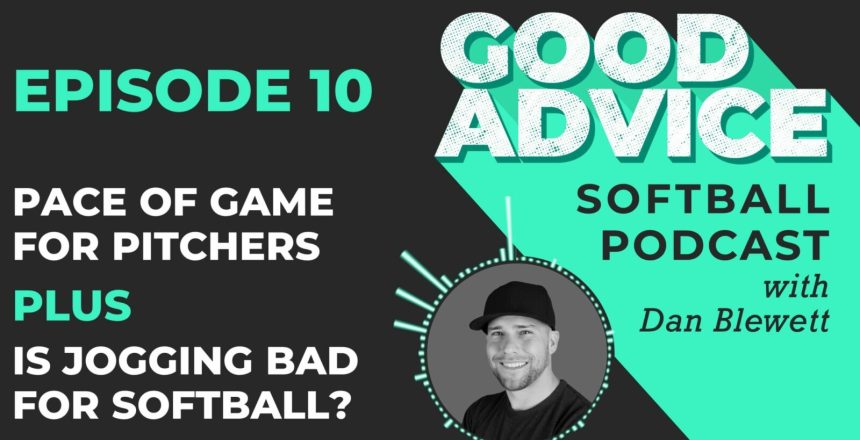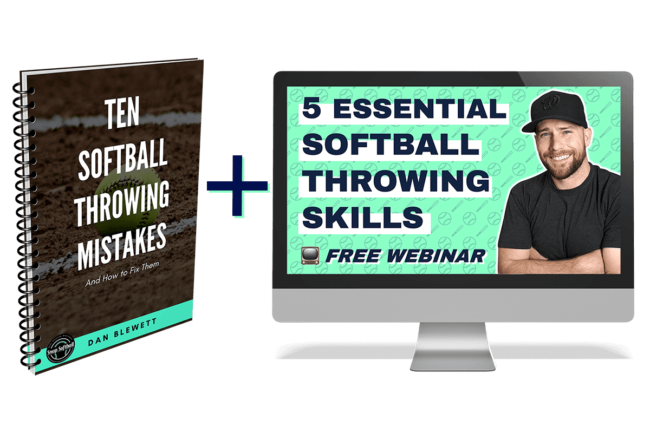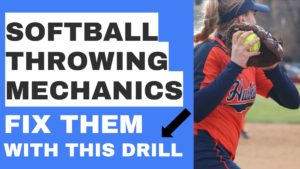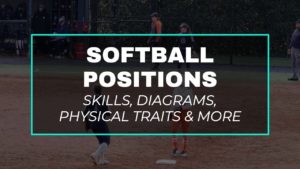*This article may contain product links which pay me a small commission if you make a purchase. Learn more.
How important is pace of game for a pitcher? We hear about this all the time, but what does moving fast on the mound actually do? Dan also discusses mechanics and how many athletes overthink them, especially when learning new things. Lastly, is jogging bad for softball? If it’s bad (spoiler: it’s not the best) then what types of running and conditioning are more worthwhile?
To submit a question for the Good Questions Q&A segment, make a voice recording and email it to Dan at hello@danblewett.com. Want to support the show? Enroll in one of Coach Dan’s online throwing courses or his mental skills course. Use code GOODADVICE to save 20% on any course, just for being a listener. Sign up for Dan’s Email list and get his free throwing eBook, and follow up with him on the interwebs: YouTube Channel | Twitter | Snapsoftball.com
Podcast: Play in new window | Download
Subscribe: Apple Podcasts | Spotify
Full Transcript: EP10 Good Advice Softball Podcast: Is Pace Important for Pitchers; Overthinking Mechanics; Is Jogging Bad for Softball?
You are listening to the good advice, softball podcast. I’m Dan Blewett. And on this show, you’ll learn how to help the softball player in your life. Sharpen her skills, improve her mindset and find new confidence through softball.
Hey, welcome back. This is the good advice softball podcast. I’m Dan Blewett on today’s show. We’ve got three great topics. We’re going to talk about. Number one is pace important for pitchers and how important is it? What does it do for you mentally, physically for your fielders, for your players behind you?
How important is that? Number two, let’s talk about overthinking movements and mechanics. That’s what we’ll cover in our 90-second mindset, which I really like as I created this show is the most, um, I never am even close to 90 seconds. So it was just like a funny thing to me. It’s like an inside joke at this point.
And then lastly, uh, in our Q&A portion. Let’s talk about different types of running and what players should be doing, what they should do a little less of as far as being in good condition and potentially improving speed in the longterm, and answering is jogging bad for softball.
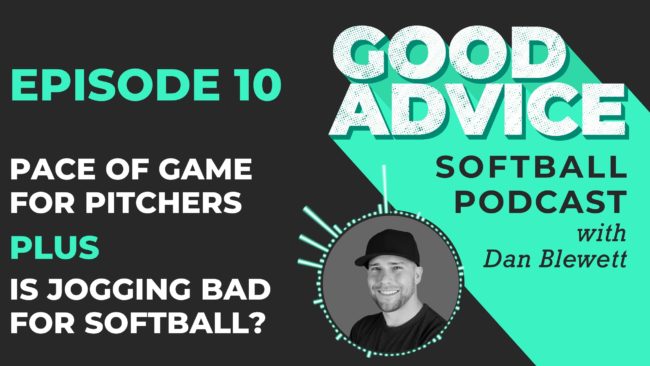
So number one is pace important for pitchers? Yes, absolutely.
It is. And here are the, here’s the really the big challenge I think with pitchers. And this is my thing. I think that my first and foremost. Reason for having a fast pace in a game. So I think the common, common answer people talk about when they’re talking about pace of game for pitchers, is that you want to keep your fielders engaged in the game.
That is a hundred percent true. That’s a hundred percent true. You hear this all the time from high level fielders in softball and baseball, and they all say like, infielders are engaged. They want the ball hit to them. Like every pitch they’re just ready. You know, they do their prep step they’re in the game.
And when pitchers are walking people, or they’re constantly drumming up long counts, or they’re just taking forever between pitches. The feelers are just like, come on. Like, I want a ground ball. I want the ball hits in me. Like, let’s go. It is really sucks. The energy out of the field. And that’s a very, very common thing.
And it’s very valid. So for, for use a pitcher, if you want your fielders really crushing it behind you. You want to absolutely keep the game moving. So they’re engaged and they’re ready to go. And they feel like they’re gonna, they’re just one pitch away from the next ground ball that being said, I don’t think that’s the most important thing for a pitcher.
I think the most important thing that pace helps you with is getting out of your own way and getting out of your head. So the big thing that’s tough about being a K a, a kicker in football. A golfer or a pitcher in baseball or in softball is that you have a really long time gap between every play. And it’s not as much a reactive thing as it is proactive.
So as a hitter, you have a time gap too, right? You’re waiting for the pitcher to throw the ball to you. However, You’re going to react once it’s on its way, right? Your body’s going to take over for the most part and react to the pitch and do its thing. But as a pitcher, that’s not really the same way as a pitcher.
You are responsible for when things start and stop. So you get the ball back, you pace around the mouth. Do you get to think about man? Bases are loaded. If, uh, if I give a hit here, we lose the game. Man. If I throw ball, we walk this person and, uh, forcing her on like, whatever it is you get, you get to do the doomsday scenario in your head, after every pitch and the longer you take and the more you sort of let those thoughts swirl around your head, um, the worst things get.
So a lot of times the best thing you can do to keep those doubts and fears at Bay. It’s just get the darn ball back and throw it. And there is something that could relate to be said. And I think most pitchers know that when they’ve had their best games, they’re in this sort of what some people call this flow state where they’re just going from one to the next, and they’re not really thinking, right.
They’re just absorbed into what they’re doing. And when you’re moving quickly, That’s how things are too. Right? So in life, everyone says, you know, time flies when you’re having fun, which is true. And that’s because you’re absorbed, you’re present you’re in the moment and you’re just doing stuff like you’re a Disneyland and you’re just looking around at everything.
You’re just excited to be there. You’re on one ride, then you’re on the next and you’re walking to the next thing. Then you’re having fun and getting ice cream with your family, whatever it is, you know, whenever you’re in the moment and really absorbed into it. Things like time passes really, really fast and it just goes the way you want it to go.
So in softball, the way to do that is to just keep going and just get the ball back, select your next pitch and execute it. And that’s where you become more robotic in a good way, because ultimately. You don’t have to think yourself through a game outside of picking your pitch, remembering the situation, remembering your job, your tasks.
So like backing up a base and with a bond where you’re going. If a comebacker is hits you, those are the things you have to remember, but really your job is just to get the ball and. Throw it, you pick your pitch, you lock your eyes on your target, and then you just let your body do what it knows what it knows how to do.
And so that’s the good part of being a robot. Like you want to have practice well enough where you don’t have to think when you’re in a game, you just want to get the ball and execute. A lot, like being a hitter, like hitters, don’t go out there and tell themselves as a swing, they react. And essentially for a pitcher, reacting is I’ve chosen my pitch.
My delivery starts now my body reacts in the sense that it’s just going to do what I’ve already told it, how to do through tons and tons of practice over time. So that’s, that’s the biggest thing that I think pace can help with. So if you have a player on your team, if you’re a coach or if you’re a parent and you have your daughter struggles at times, especially.
You know, if things get out of hand where she walks one person, then the flood Gates open and she’ll walk three more or she struggles to come back after giving up a couple of hits. It’s always going to be, cause she’s getting in her own way. There’s the mental component creeping in. So. When that happens, getting the ball back and quickly, getting to the next pitch is going to eliminate that dwelling time where she’s going to think about man.
I just walked two batters, man at escape. Two hits a guy I’m not pitching well anymore of my team’s going to be disappointed me. You don’t have as much time to think about that stuff. When you just get the ball back, get him in the circle. And pick your next pitch and throw it. So that’s what I think the biggest thing is for pitchers, as far as pace of game goes, it’s great to keep your feelers engaged and that’s absolutely a real thing.
It’s absolutely an important thing. But I think the biggest thing that pays helps you with is getting out of your own way, getting out of your own head and helping you just to be a little more of a robot in a good way on the mound.
All right. So for our 92nd mindset here today, let’s talk about overthinking movements and mechanics. And this is an extension of our talk about pitchers today, but this applies all over the field. And I see this when I work with players in softball and baseball, sometimes when I’m giving them a new drill or a new task to do, like I’m having them do a new fielding technique, whatever it is.
A lot of times, and this is just a percentage of athletes. There are a percentage of athletes that are overthinkers and they’re trying to say, okay, I need to do this. Then I need to do that. And then do that. And it can be a challenge as a coach or a parent understand. Players when they just become a little too robotic or they make stuff’s more difficult than it should be.
They’re doing something that other players are doing pretty easily that they’re catching on pretty fast. And this one players just like, it’s, it just looks awkward. And it’s just like taking forever and they’re throwing the ball around or they’re just swinging and missing along. You’re like, what’s going on?
Like, why is this so difficult now? And when you see things that just don’t seem right. When a player’s learning something new and they seem kind of robotic or they seem to take a long time between reps of it or there’s something just like going really haywire about it. It’s usually because they’re overthinking it and they’re trying to walk through the mechanics too much.
And so what I learned over time as an instructor is to, when you feel like it’s probably overthinking number one, ask them about it, don’t say, Hey, are you overthinking you? But to say, what are you thinking about right now? You know, what’s, what’s on your checklist right now, as you’re doing all this and that, or what are you worried about?
How do you feel you’re doing with this drill? What what’s worrying you about this drill? What are you struggling with? And if you get a really long detailed answer or they’re saying, Oh, I’m trying to do this, but then I’m trying to do that. Then they’re just overthinking it because when you introduce new things, hopefully they’re simple.
Number one. And when they are simple, or even if they’re a little more complex, you should always make it clear to the player you’re working with that, you know, we just needed to work on like the one or two aspects of it. Just these two things, the whole thing doesn’t need to be perfect. Like we can’t change your whole swing today.
We can’t change your whole pitching motion today. Uh, but we can work on just like these one or two things and then they’ll get better over time. But one of the biggest keys is this is again, really important for parents and coaches knowing your kid is if they’re, if they’re overthinkers, it’s probably the best tool you have is having them do things fast.
So it get them to stop thinking. This is a great thing with infield play. When you’re teaching infielders new footwork, how to turn it over, we’ll play it for the first time or just different techniques about ways to approach ground balls, how to move through a backhand, how to get around stuff like a lot of this stuff.
When you slow it down. It gets worse because it becomes a less athletic and less than, yeah. Same thing with hitting times. If you’re trying to like break the swing down and make it slow into like one, two, three, four, like in the steps, same thing with pitching, it becomes on athletic that players have a hard time figuring it out.
Whereas if you just let them kind of. Think about one thing and react. Think about one thing and do it quickly think about one thing, but not think about the other things, then they can kind of say, okay, I can still be an athlete and just do this one little thing and then I’ll get it. So I know it was a little long winded, but basically if you have an overthinker in your household or on your team, one of the best things you can do for them.
Is to have them do drills quickly. So don’t allow them to think, just say, Hey, just get it and throw it quick. Or I’m just going to go rapid fire for a little while and throw you a bunch of them in a row where they don’t have time to stop and reset and walk through themselves through it mentally, rather just like, keep moving, keep moving, keep moving and let their body do what it potentially.
RD knows how to do that. They’re just kind of getting in their own way and slowing it down, making it clunky. So speeding stuff up like that can make a really big difference. Alright. It’s time for good questions. Our listener Q and a segment. Remember if you have a question you’d like answered on the show, please email a voice recording to hello@danblewett.com.
This is easy to do on your phone, through the voice memos app on iPhones or any voice recorder app on Android links to email me are in the show notes.
All right. So for our Q and a portion today, uh, I often get asked, what is the role of running, how important is running? Should I be jogging is a good for me or bad for me. How often should I be sprinting? Um, should I do interval training? Should I do other types of cardio? Like what is the right thing to do to stay in good shape and potentially get faster?
So these is, these are all good questions and I think it’s more complicated today than ever used to be. Um, and one of the things is I think with a lot of. Female athletes, especially who are more, I think weight conscious and body image conscious than men. They want to do certain things that are maybe less productive for conditioning to keep their weight down or to keep their image where they want it.
And that usually includes a lot of distance running. That’s really my only, my only point there is that they’re probably more inclined personally, to do distance running and stuff like that. And long, longer jogging, longer bouts cardio, you know, to unfortunately maintain like the image that society projection upon them.
Right. Which isn’t fair. Um, these are counterproductive things for softball players because it’s not really a long answer. Steady slow kind of sport. So, you know, if your, your daughter, or if you are here, your players are doing lots and lots of cardio each week. It’s not really gonna help them on the field.
So I’d say the acceptable amount of cardio, and we’ll just call cardio whether it’s being on a bike, being on an elliptical machine, running long distance, whether you’re on a treadmill or outside all of those things against steady state. Right. And you’re just running for a period of time. Those should probably be no more than two 20 minute bouts per week.
And the reason is that long distance running tends to sort of eat away at your muscle. And we can all see this in real and like real world application, right? Like long distance runners are skinny, not muscular people. Um, they have some muscle tone, but they don’t have much stress. And as far as, uh, testing vertical leaps and stuff like this, like measures of explosiveness.
Distance runners have the worst. They have the worst vertical jumps with like all Olympic athletes, essentially. And that’s because they’re not trained that way. They’re training to run long distances. Now, of course, these are athletes that are putting in, you know, 30, 40, 50, 60 up to a hundred miles a week sometime, but still your body will eventually.
Shape itself to the demands placed upon it. The athletes were the highest vertical jumps and the Olympics are actually the, the weightlifters they’re so strong and so explosive that just getting their body weight to move is pretty easy. They actually have higher verticals and basketball players. They have higher verticals even than the sprinters and Olympic weightlifters are actually faster in the first 10 yards of sprinting than Olympic sprinters are, which is crazy, but it also is a Testament to their power, to weight.
So long story short, it’s just good idea to not do too much cardio. And when you are doing cardio, you should also consider how much cardio you’re getting in your sport. So many athletes are multi-sport athletes. So if you’re playing basketball, if you’re playing soccer, that obviously counts as cardio.
It’s a lot of it. So do you need to do more of it in the week? Right? If you have three basketball practices, do you need to be going on the treadmill two weeks or two days a week? Also? You definitely don’t. Right. So consider the scope of what you’re getting in all your sports too. I mean, there’s a reason.
A lot of people played basketball to stay in shape because it’s a great activity. It’s got agility, it’s got sprinting. It’s also got cardio. Um, and you don’t really need to go around the treadmill. If you’re playing basketball three days a week, you just really don’t, you’re getting it there. So that’s, that’s my recommendation.
I’d say no more than two 20 minute bouts per week of steady state cardio type exercise with no matter what type it is, whether it’s running or biking or elliptical, whatever. And then. The other types of running cause conditioning is important. There’s interval training essentially. So say you went for a run and you ran hard for a minute and a half, and then you sorta walked for an a minute or you did a really slow jog for a minute.
That’s obviously interval training. Interval training is much better than steady state cardio. It helps you get faster. It helps you increase your VO two max faster. It retains more of your, Oh, because it isn’t slow. A steady state uses a little bit of a different energy system. So I would replace steady state cardio with interval training, if you could.
So if you’re going to do two longer conditioning days that take 20 or 30 minutes a week, I would make them interval runs. And a lot of players think that when I’m walking, I’m not getting better. Like they don’t want to run hard for two minutes and then walk from it. They feel like that’s cheating. It’s really not like your heart rate goes up.
Your heart rate comes down. It’s good for your body to do it. That way. You get more benefits doing interval training than you do from. Running continuously from, for 20 minutes, even though it might feel like you’ve done more work running continuously for that 20 minutes. So. If you could swap your, he state cardio for interval training, that would be a good swap for sure.
And then lastly, sprinting, especially for players that want to get faster. And obviously softball is a game that requires speed and every player wants to get faster. Uh, players need to be consistently sprinting. So if you consider again your, your, of your week, you need to probably get at least two days are the speed work in, and that means.
It’s hard to say exactly how much distance of Springs you get, but something, but somewhere between 10 and 15 sprints, somewhere between 20 to 60 yards is a good recommendation. So if you did 60 yard sprints, after a long, you know, you might do up to eight of them and that’s only 500 yards of sprinting, but that’s a good amount.
And you’d walk back when you’re doing absolute speed work. So this is when, if you’re going full speed, like a legitimate sprint. You need to be fully recovered for the next one. This isn’t like a baseline touches like suicides in basketball where you’re, you know, you’re going baseline to baseline was so little rest that it doesn’t really become a sprint anymore.
It becomes a jog. When you do actual sprint work, you want to be fully rested for the next one, so that your body uses your sprinting energy system, your anaerobic system, to get all of it right. To get as, go as fast as you can on each, on each rep. And that’s how you really get faster. So for players that are really serious about their speed.
They need to devote time and carve it. Other schedule to actually sprint probably twice or maybe three times a week. And again, that also needs to be considered as part of their total scope. So if you’re at softball practice and sprinting a lot too, then maybe three days a week is too too much on the side.
Or if you’re playing basketball, probably two or three days of sprinting is probably too much. If you’re playing a lot of basketball. So you need to figure out how much you can handle. Totally. But. Again, at the same time for, we used to get lots of players got so many players say, Hey Dan, Hey, Luke is my business partner.
I want to get fast or I need to get my 60 time down or my 20 yard time down my home, the third time at home to first time, whatever it is, how do I get faster? Or like, well, how often are you sprinting? Like, uh, You know, and they’re not, and it’s just like anything else. If you want to increase your batting average, you go hit in the cage a lot more, right?
You’d work on your swing. If you want to pitch the ball harder, you’d go probably do some pitching lessons and you’d probably pitch a little more. Right? You’d strengthen your rotator cuff. You do all those different things to try to be a better pitcher. But yet with sprinting, we act like it’s sometimes some magical thing.
I just want to suddenly get better at. Whereas if you’re consistently taking twice a week to sprint. And on a good regimen. Again, doesn’t take a lot to be on a good spring regimen. Um, that’s gonna pay off in the long term where if you’re saying, Hey, I’m 14. I want to be the fastest girl, my team, by the time I’m 16, if you sprint twice a week, go do sprint workouts and they don’t have to be super duper difficult, but you do twice a week for the next two years, you’re going to make a lot of progress, a lot of progress, but it has to be.
And again, carve into your schedule, consistent and purposeful. So to summarize. No more than two days a week, I’d say of steady state cardio. And this depends on the person. So if there’s a player, who’s got a little more weight to cut down. Maybe they have a little, you know, they’re a little too big for their size.
Maybe a little more cardio is fine for them, but for most players who have maybe a closer to baseline body weight, or they’re. Not really trying to shape themselves too much, you know, probably twice a week is all they need and they probably want to focus more on interval training or sprinting. So hopefully those recommendations help.
I think, again, conditioning that part of strength training today is getting a little bit lost because we don’t do as much conditioning. I think as an industry, as we used to and players don’t seem to do as much conditioning at practice as they used to, and players are not very motivated to do conditioning on their own because it’s hard and it’s boring.
But it’s important. And hopefully these guidelines today helped. Well, that’s all the good advice I’ve got for today. If you enjoy the show and would like to support me while also helping yourself enroll today. And one of my online softball courses, my she’s got a Canon throwing courses come with pricing plans for any budget.
And my resolute athlete, mental skills course will help your daughter or team build the mindset of a champion. Enroll in any of my courses through the links in the show notes and save 20% with code good advice just for being a listener. Be sure to subscribe to my weekly email list where you’ll get updates on all my new videos and episodes, nearly 4,000 people get my emails and you should to sign up for the link in the show notes.
Lastly, who do you know, who can use some good advice? Please share this podcast with a friend, subscribe on iTunes, Spotify, or wherever you listen to podcasts and subscribe to my snap softball, YouTube channel, where you’ll find this podcast and hundreds of softball, instructional videos. Back when I was a player, I was always thankful for good coaches and good advice.
I’m Dan Blewett and I’ll see you next time. .

